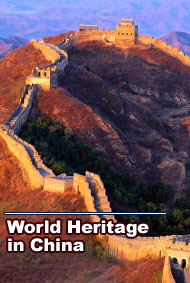
|
|
|
Gesar Epic Tradition
In 2009, Gesar epic tradition was inscribed on the Representative List of the Intangible Cultural Heritage of Humanity by the UNESCO. Description The ethnic Tibetan, Mongolian and Tu communities in western and northern China share the story of the ancient hero King Gesar, sent to heaven to vanquish monsters, depose the powerful, and aid the weak while unifying disparate tribes. The singers and storytellers who preserve the Gesar epic tradition perform episodes of the vast oral narrative (known as ‘beads on a string’) in alternating passages of prose and verse with numerous regional differences. Tibetan masters carry bronze mirrors and use facial expressions, sound effects and gestures to enhance their singing, while Mongolian performers are accompanied by fiddles and intersperse improvised, melodic singing with musical storytelling and oral narrative. Epic performances, often accompanied by rituals such as offerings and meditation, are embedded in the religious and daily lives of the community. For example, when a child is born, passages about King Gesar’s descent into the world are sung. The hundreds of myths, folktales, ballads and proverbs handed down as part of the tradition not only serve as a form of major entertainment in rural communities but also educate listeners in history, religion, custom, morality and science. A continuing inspiration for thangka painting, Tibetan opera and other art forms, the Gesar epic imbues audiences both young and old with a sense of cultural identity and historical continuity. Criteria for inscription on the Representative List R1: Transmission of the Gesar epic from generation to generation is clearly described and the element gives a sense of identity and continuity to the several ethnic communities concerned; R2: Inscription of the Gesar epic tradition on the Representative List would contribute to the visibility of intangible cultural heritage and promote respect for cultural diversity and human creativity; R3: The safeguarding measures described in the nomination include efforts focused on research and transmission while strengthening the cultural space in which the epic is learned and performed; R4: The communities concerned were involved in the nomination process and gave their consent in a free, prior and informed manner; R5: The element is inscribed on the National List of Intangible Cultural Heritage administered by the Department of Intangible Cultural Heritage of the Ministry of Culture. |